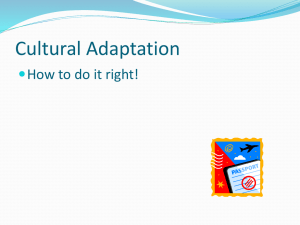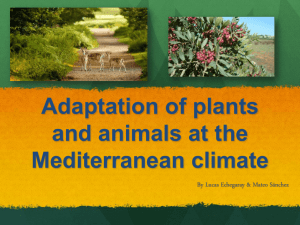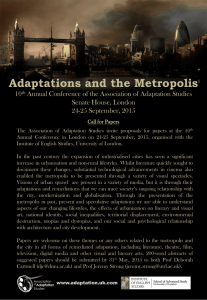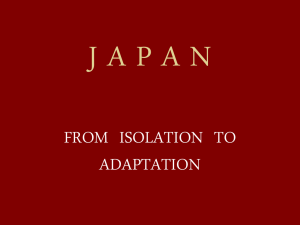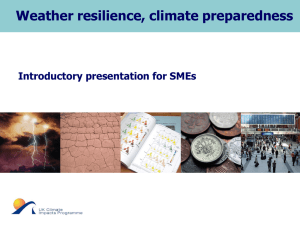Adaptation - France with Simone
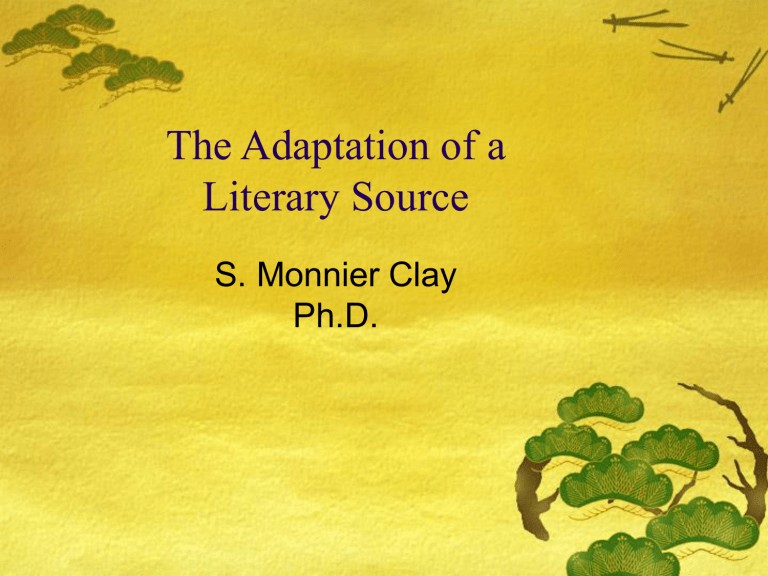
The Adaptation of a
Literary Source
S. Monnier Clay
Ph.D.
What is the adaptation of a text?
Literary adaptation is the adapting of a literary source (e.g., a novel, short story, play, poem) to another genre or medium, such as music, a stage play, a ballet, an opera, a film, or even an animation.
It can also involve adapting the same literary work in the same genre or medium, just for different purposes, e.g., to work with a smaller cast, in a smaller venue, or a larger cast in a larger venue, or for a different demographic group
(such as adapting a story for children).
All these types of adaptations required the involvement of a specific type of writer.
-If a novel or a short story is adapted for the stage, it needs to be rewritten as a play. (Requiring a playwright)
-If a play is rewritten as a story, it takes the shape of a novel or a short story.
(Then, it calls upon a writer.)
-If a text is adapted to an opera (operetta or musical), it is to be rewritten as a libretto. (This necessitates a librettist.)
-If an original work is adapted to film, then it is reworked as a scenario
(by a screenwriter.)
Adapting for screen and stage:
To adapt means to transpose from one medium to another.
It is the ability to make fit or suitable by changing, or adjusting.
Modifying something to create a change in structure, function, and form, which produces a better adjustment.
Most literary works are usually the work of a single individual.
The writer, is the sole creator of his work. He has full control.
An adaptation requires the co-operation of one or two writers, a number of craftsmen and technicians, working together as a team. It needs a production unit.
Adaptations: From Short Story to Big Screen: 35 Great Stories That Have Inspired Great Films by Stephanie Harrison ,
Three Rivers Press, 2005: ISBN 1400053145.
A Theory of Adaptation . Linda Hutcheon, Routledge, 2006: ISBN-10: 0415967953.
Adaptation: Studying Film and Literature.
John Desmond, McGraw-Hill, 2005: ISBN-10: 007282204X.
David Lee Rubin, editor. EMF: Studies in Early Modern France , Vol. 8 ("Strategic Rewriting"). Rookwood Press, 2002.
The adaptation of a play:
-Monologues, dialogues… actors need to speak constantly to fill the time frame.
-A play is told in words. Thoughts, feelings, emotions and events are described in dialogue on a stage locked within the boundaries of the proscenium arch.
-A play deals with the language of dramatic action.
-The action on stage is stylized, and we accept the unreal aspect of the action as a representation of reality.
The boundaries of the stage apply to a ballet or a staged opera.
However, in the adaptation of a play, verbal exchanges have to be reduced.
(In opera, music fills space and words set to music take longer to express.
In ballet, spoken words are replaced by physical expression and staging.)
Space:
In the adaptation to a different stage, the action is subjected to a new set of limitations.
(ballet, opera, musical…)
In film, the changes of settings are almost limitless.
The adaptation of a novel, short story or a poem:
-Physical appearance:
Because the stage and film are a visual medium they show more than the novel possibly could about the physical nature of people, places and things.
In a visual medium, the images presented determine the response of the audience.
What aspect of the imagery described in a book will become useless on stage or on screen?
(Will the audience accept the physical appearance of the actors, singers, dancers, selected? or that of the whole image that has been created?)
Characters:
A novel usually contains a larger number of main characters than a staged work. (Reduction of characters, or combination into fewer characters.)
A short story or poem usually develops fewer characters. (Manipulation or addition of characters.)
-Time factor:
We can read a book for as long as we wish.
A staged work is usually limited to two hours.
A musical work requires musical space.
A visual work requires scenic space.
-Language:
The writer communicates through verbal language.
The screenwriter, or librettist, conveys narrative thought through visual and verbal means.
For example: If the novelist wrote: “Don Jos é stabbed Carmen in front of the arena.
”
The librettist or the screenwriter must show a man stabbing a woman in front of an arena.
-Expression:
In a visual setting, the author is more limited than the writer of a book.
The stage or the screen do not lend themselves well to abstract ideas.
How can the internal life of a person be staged? (thoughts, emotions, feelings, memory)
The adaptation of fairy tales:
The story is re-tolled and altered to some degree.
The characters may be modified.
For children: the language may be simplified.
Dialogues may be subtracted or added.
Illustrations created a different mood.
A fractured fairy tale:
It is the reworking of a traditional fairy tale.
It retains familiar elements such as characters and plot, but the story has been modified and includes a new twist.
A new version:
This is a distinct rendering of an original story.
Different versions of the same tale are usually associated with a particular author and country of origin.
For example, the original French version of Cinderella , Cendrillon , was published by
Charles Perrault in 1697; the German version by the Brothers Grimm, Aschenputtel , was first published in 1812.
Most modern-day English language translations of the Cinderella story are adapted from one of these versions."
A variant:
It is a tale bearing resemblance in theme, motifs, or tale type to another, but which has its origin in another culture.
For example, Little Red Riding Hood .
Fairy Tales and Folk Tales: adaptations and variants . University of Saskatchewan Education Library
(https://library.usask.ca/files/education/fairy2005.pdf)



